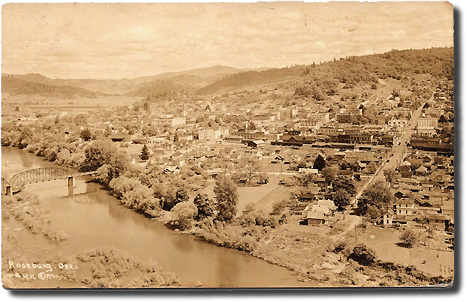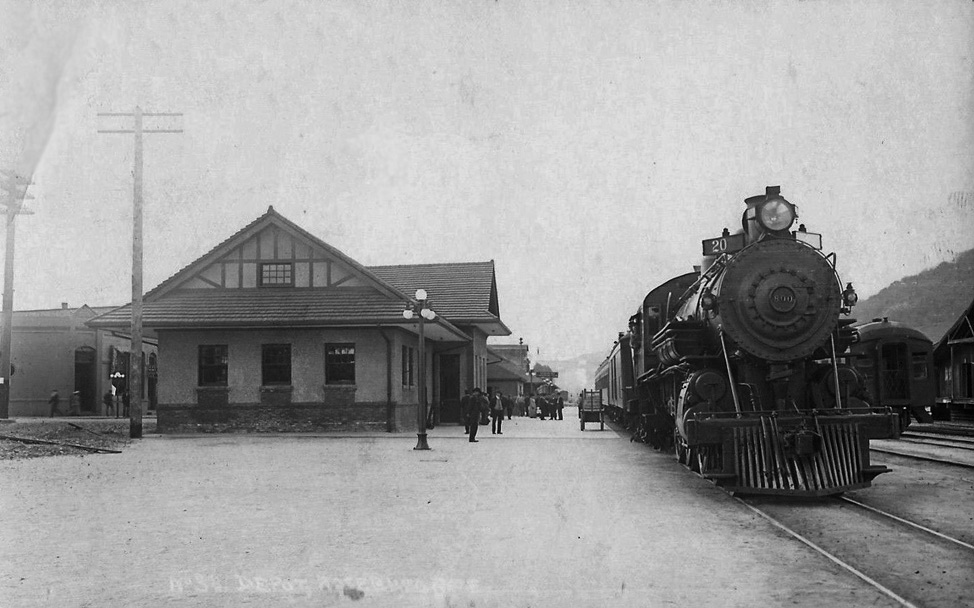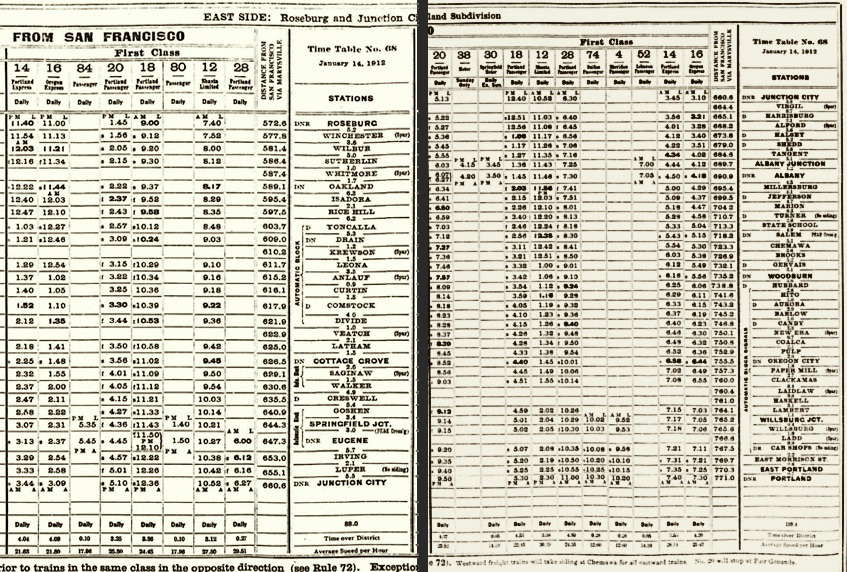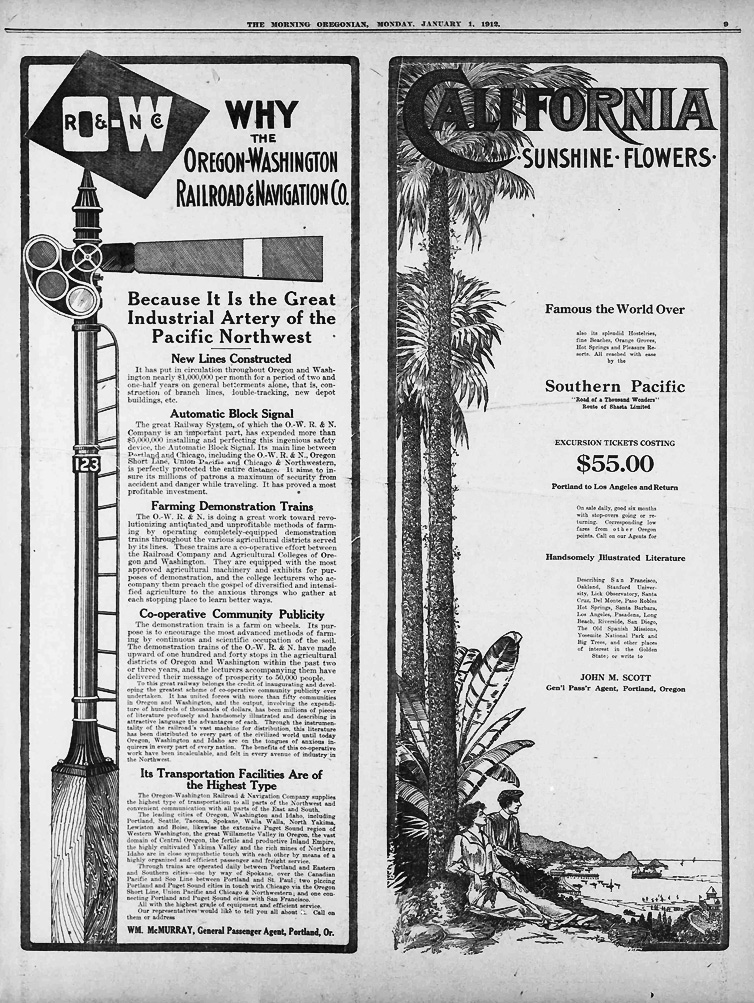|
-----------------------------------------------------------------------------------------------------------------------------------Last Addition 7-4-21-xxxSP Index----The Past Less Traveled
|
|
| During Harriman times, the operational demarcation line between Southern Pacific and Union Pacific was somewhat blurred. While corporate distinctions remained, the two railroads interrelated with each other more as divisions of a larger railroad, the Harriman System, than as separate entities. Thus, locomotives and other equipment were freely exchanged between them as need arose, and that is what we see here.
If Union Pacific subsidiary Oregon Short Line 4-6-0 #800 had a conscious awareness, she surely would have felt like a duck out of water (there is a pun in this, somewhere), for here she is, more than 500 miles away from home rails on Southern Pacific's Syskiyou Line at Roseburg Oregon, gently panting away during Ashland-to-Portland train #20's assigned twenty minute station stop. Officially known as the Portland Passenger, the train was a mere three car plug designated to fill-in schedule holes ignored by the limiteds. The lengthy stop likely involved the changeout of engines from the one that had drug the train the 120-odd miles through the Siskiyou mountains from Ashland to OSL #600, which just-as-likely may have powered the train for the remainder of the run up to Portland. A close scrutiny of the loco reveals that it is equipped with a cinder chute, which begs a question: If it indeed is a coal burning locomotive not temporarily fitted with oil burners, where did it load-up with fuel? A roughly 400 miles round-trip from Portland would have been beyond the tender's coal-hauling capacity, so coal must have been hoisted aboard somewhere else further. By then, it had been roughly a decade since most SP locomotives in Oregon had seen their coal bunkers replaced with oil tanks, the only exceptions being the few operating on isolated subsidiary Coos Bay, Roseburg and Eastern (plus a handful of holdouts that still burned wood). It may be that some remnant coaling facilities existed somewhere, but it could be that fueling the #800 merely meant lining-up next to a hopper car full of coal and borrowing a clamshell bucket equipped crane from maintenance of way. Unless this was the wet season, the danger of igniting the forests along the right-of-way is another potential argument in favor placing the cinder-spitting loco on the train at Roseburg, rather than at Ashland. (Faced with the same sort of situation today, UP has chosen to run its excursion steamers on oil.) As to the date of the image, its photographer recorded it sometime during the 1910-1913 period. The depot seen here opened 1910 (Medford's third - one of its predecessors appears further down the tracks), and a January, 1914 employee timetable shows #20 as originating at Cottage Grove. Perhaps the momentarily popular Ashland to Grants Pass McKeen Car service that SP instituted in 1910 robbed the Portland trains of enough local traffic to cause the cutback. As to the #800 itself, according to Don Strack's fine Utah Rails website, Baldwin constructed her in 1902 as a coal-burning Vauclain compound, and OSL simpled her sometime between 1906 and 1909. She was renumbered to OSL #1562 in 1915, and only lasted another decade, or so, before being set aside and scrapped. Her fairly short livelihood may be an indication that her class was not held in high regard. She was photogenic, though. |
|

Roseburg, speculatively about 1930 - Frank Patterson postcard; click on image for larger rendition, and click HERE for a blow-up of the depot area. |
|



